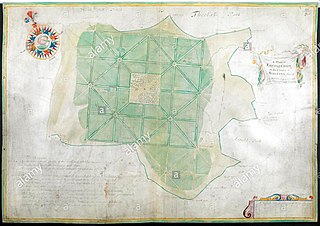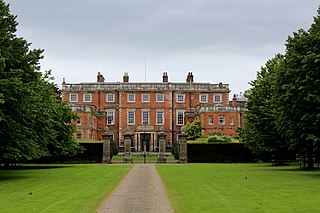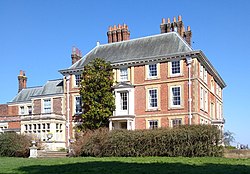
Southgate is a suburban area of north London, England, in the London Borough of Enfield, 8 miles (13 km) north of Charing Cross.

The London Borough of Enfield is a London borough in Greater London, England. The main communities in the borough are Edmonton, Enfield, Southgate and Palmers Green. Enfield is an Outer London borough and forms part of North London, being the northernmost borough and bordering Hertfordshire to the north and Essex to the northeast. The local authority is Enfield London Borough Council, based at Enfield Civic Centre. The borough's population is estimated to be 333,794.

Enfield is a large town in north London, England, 10.1 miles (16.3 km) north of Charing Cross. It had a population of 333,587 in 2021. It includes the areas of Botany Bay, Brimsdown, Bulls Cross, Bullsmoor, Bush Hill Park, Clay Hill, Crews Hill, Enfield Highway, Enfield Lock, Enfield Town, Enfield Wash, Forty Hill, Freezywater, Gordon Hill, Grange Park, Hadley Wood, Ponders End, and World's End.

Enfield Chase is an area of Enfield that is named for a former royal hunting ground. It comprises the majority of the open countryside within the London Borough of Enfield, and land north of the M25 within Hertfordshire. At the time of a survey by Francis Russell in 1776-7, the Chase extended from Monken Hadley in the west to Bulls Cross in the east, and from Potters Bar to Southgate.

Edmonton is a town in north London, England within the London Borough of Enfield, a local government district of Greater London. The northern part of the town is known as Lower Edmonton or Edmonton Green, and the southern part as Upper Edmonton. Situated 8.4 miles (13.5 km) north-northeast of Charing Cross, it borders Enfield to the north, Chingford to the east, and Tottenham to the south, with Palmers Green and Winchmore Hill to the west. The population of Edmonton was 82,472 as of 2011.
Elsyng Palace was a Tudor palace on the site of what are now the grounds of Forty Hall in Enfield, north London. Its exact location was lost for many years until excavations were carried out in the 1960s.

The London Borough of Enfield is the northernmost of the Outer London boroughs. The borough lies within the Metropolitan Green Belt, and several of its 123 or more parks and open spaces are part of it. The ancient Enfield Chase, remnants of which still exist, occupied much of the area. In addition to many playgrounds and sports facilities, the main areas of public open space are:

Sir Hugh Myddelton, 1st Baronet was a Welsh clothmaker, entrepreneur, mine-owner, goldsmith, banker and self-taught engineer. The spelling of his name is inconsistently reproduced, but Myddelton appears to be the earliest, and most consistently used in place names associated with him.

Manderston House is a British stately home in Duns, Berwickshire. It is the seat of the Palmer family. It was completely rebuilt between 1901 and 1903 and has sumptuous interiors with a silver-plated staircase. The proprietor, Sir James Miller, 2nd Baronet (1864–1906), told the architect, John Kinross, that there was no budget: "It doesn't matter". The house is a Category A listed building and the surrounding area, which includes the farm complex at Buxley, is listed in the Inventory of Gardens and Designed Landscapes in Scotland.

Chace Community School is a coeducational secondary school and sixth form located in Forty Hill, Enfield Town, England. It is situated on Churchbury Lane with its fields backing on to Baker Street. Chace is spelled with a 'c' rather than a 's', despite the school being close to the Chase Side area of Enfield. The school logo is the Enfield. Its colours are black and red.

Forty Hill is a largely residential suburb in the north of the London Borough of Enfield, England. To the north is Bulls Cross, to the south Enfield Town, to the west Clay Hill, and to the east Enfield Highway. Prior to 1965 it was in the historic county of Middlesex.

Newby Hall is a country house beside the River Ure in the parish of Skelton-on-Ure in North Yorkshire, England. It is 3 miles (4.8 km) south-east of Ripon and 6 miles (9.7 km) south of Topcliffe Castle, by which the manor of Newby was originally held. A Grade I listed building, the hall contains a collection of furniture and paintings and is surrounded by extensive gardens. Newby Hall is open to the public.

Pymmes Park is located in Edmonton, London and is bordered by the North Circular Road.

Cheltenham Town Hall is an early-20th century assembly rooms in Cheltenham, England. Unlike most town halls, it is a public venue and not the seat of the borough council, which is housed in the nearby Municipal Offices. It is a Grade II listed building.

Bulls Cross is a road and hamlet in Enfield, England, on the outskirts of north London, forming part of the Metropolitan Green Belt. Although it now lies within the ceremonial county of Greater London, prior to 1965 it was in the historic county of Middlesex. The area is situated west of the Great Cambridge Road, and south of the M25 motorway. Crews Hill is to the west, Bury Green to the north, and Bullsmoor to the east.

Edward Augustus Bowles was a British horticulturalist, plantsman and garden writer. He developed an important garden at Myddelton House, his lifelong home at Bulls Cross in Enfield, Middlesex and his name has been preserved in many varieties of plant. The standard author abbreviation Bowles is used to indicate this person as the author when citing a botanical name.

Colonel Sir Henry Ferryman Bowles, 1st Baronet was a British Army officer and Conservative politician.
Sir Nicholas Rainton was an English merchant who was Lord Mayor of London in 1632.

Minchenden Oak Garden is a public park in Southgate, London owned by the London Borough of Enfield.

























